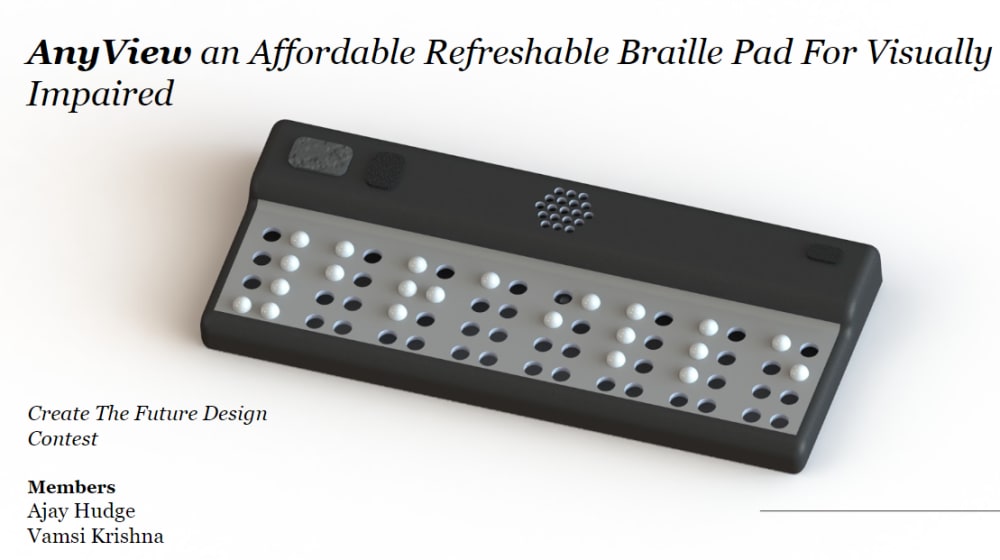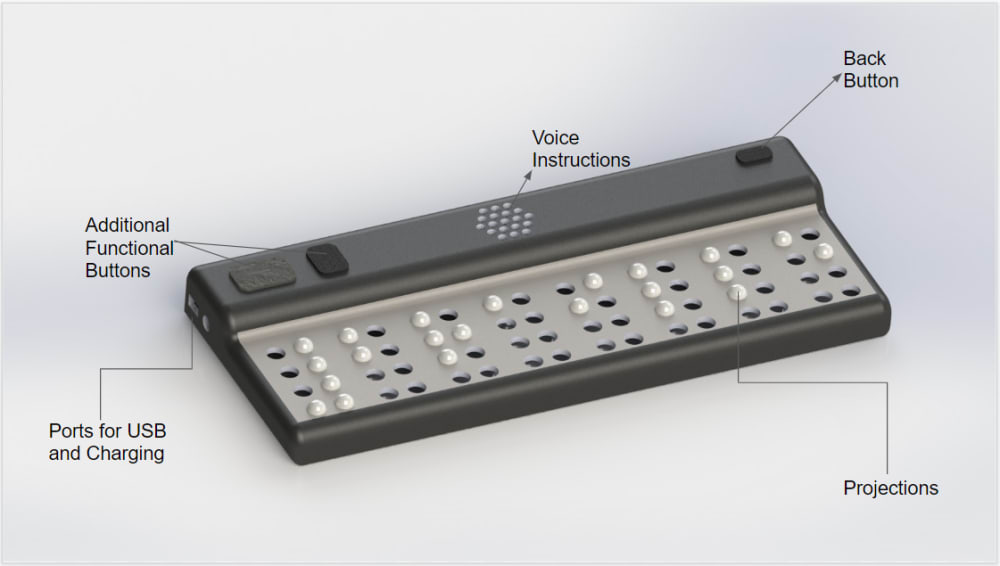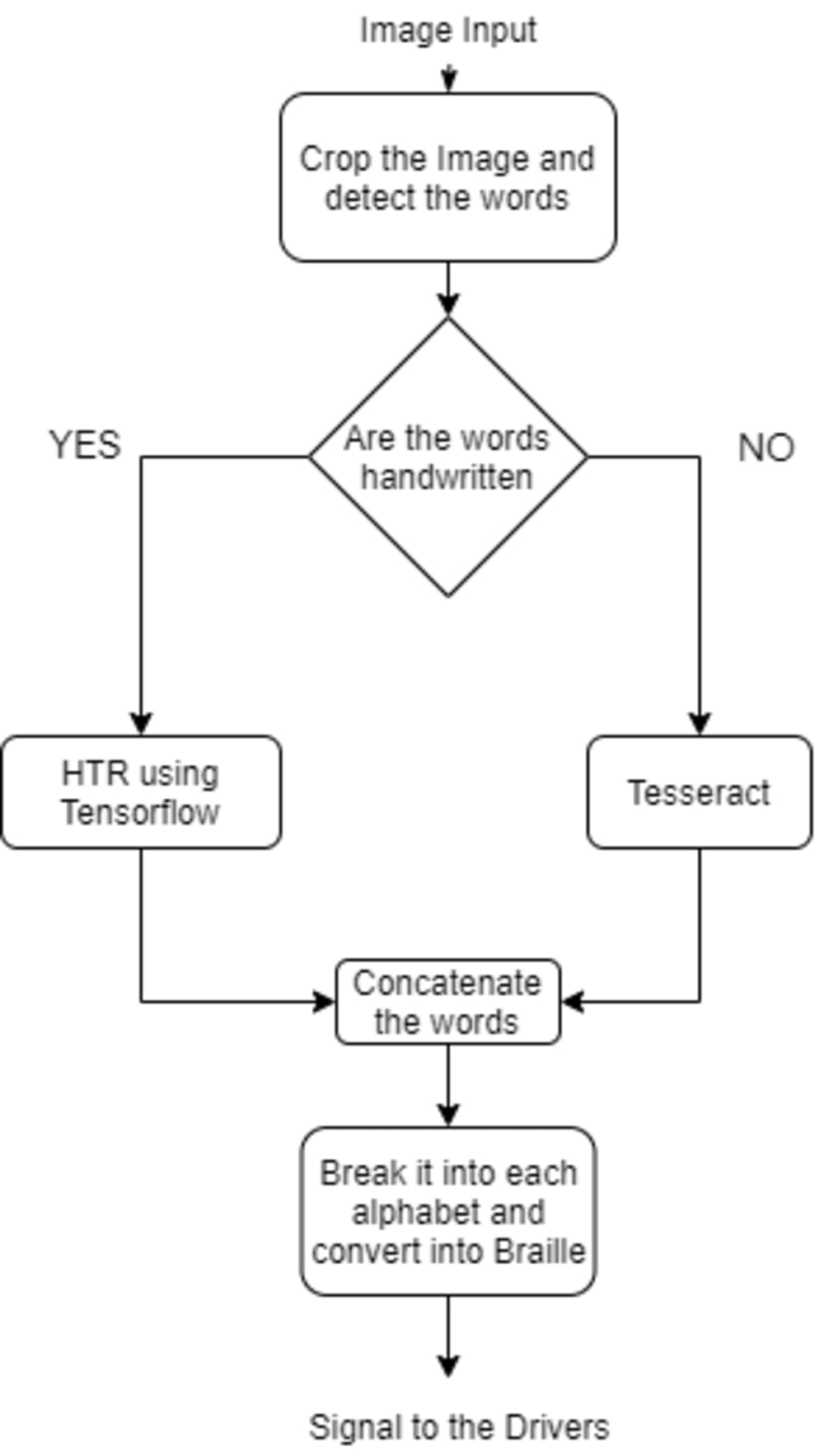The estimated number of people visually impaired in the world is 285 million[1], which incapacitates them from activities like reading, writing, navigating, etc. The majority of the people belonging to developing countries are living on less than $1.25 per day so it’s almost impossible for the parents belonging to developing countries to educate their visually impaired children [2], less than 3% of visually impaired children are learning to read Braille in school [3]. This means a remaining larger portion of visually impaired people are not learning braille. Braille is a major system that can enable education and schooling for the visually impaired.
AnyView is an affordable and efficient refreshable braille pad for visually impaired. This project aims to tackle the age-old conventional method of embossed paper braille system which is expensive and has limited works of literature converted. Wherein the Refreshable Braille pad is dynamic, unlike embossed paper it is not limited, by converting any E-book to braille the user can access unlimited works of literature. It is portable and can be used anywhere, it can connect to multiple devices for text transfer. It is not limited to just text to braille, but for navigation, time, weather display, etc. But,the existing braille pads in the market use piezoelectric crystals which makes them expensive.
Our design
We have designed a novel construction of micro threaded actuators that can be used for the braille application and significantly reduces the cost. The design is modular as each cell is symmetrical in shape and characteristics which allows ease of construction of the Braille pad. The specific drivers are designed to provide current and allow fast switching of braille cells which increases the control and flexibility of the build.
Working
A total of 8 braille cells are combined, a central processor controls each driver connected to those cells. The processor can convert any E-book, Web page, time, weather information, etc, to braille, additional switches are provided for the control of the speed, to proceed with the text, power. We have also implemented handwriting detection using machine learning and Optical character recognition using tesseract, which allows the conversion of images to text, and then an algorithm converts the detected characters to braille, this further increases the access of literature to visually impaired.
With an aspiration to change the way visually impaired people read and navigate their day to day life. We created our project, AnyView. We hope it can address the market needs and reach millions of visually impaired all over the world.
References
[1] World Health Organization, “Fact Sheet: Visual impairment and blindness”, October 2013, Web, July 01, 2014, http://www.who.int/mediacentre/factsheets/fs282/en/.
[2] Mail Dominic M., Gavin Yamey, Adam Visconti, April Harding, and Joanne Yoong, “Where Do Poor Women in Developing Countries Give Birth? A Multi-Country Analysis of Demographic and Health Survey Data”, PLOS ONE, February 28, 2011.
[3] Spungin and S. J., “Braille and Beyond: Braille literacy in a Larger Context”, Journal of Visual Impairment & Blindness,
v90, n3, p271-74, ISSN: 0145-482X, May-June 1996
Like this entry?
-
About the Entrant
- Name:Vamsi Krishna Varigonda
- Type of entry:teamTeam members:Ajay Hudge
- Software used for this entry:SolidWorks
- Patent status:none








